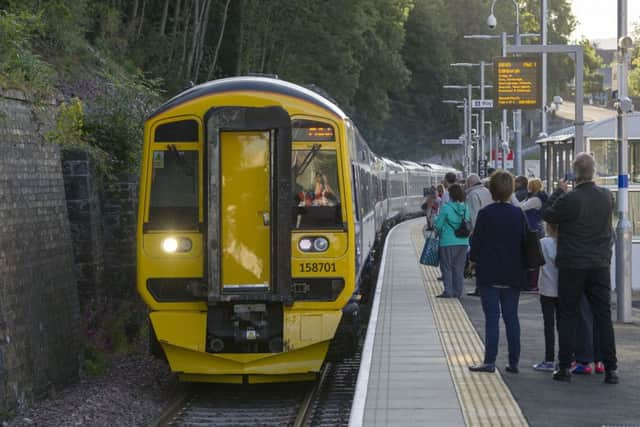Scottish towns with no railway station look to get back on track


The opening of the longest new passenger route in more than a century has led to questions on where the next wave of station openings could take place.
From St Andrews to Peterhead, there are arguments for the rail network to be expanded.
Advertisement
Hide AdAdvertisement
Hide AdWith each potential project involving varying degrees of cost and building work, some are more likely to happen than others.


David Spaven, a rail consultant and author of Waverley Route: the birth of the Borders Railway, said: “Rail campaigners across Scotland have taken inspiration from the example of the Borders Railway, and it’s clear that a number of other key locations deserve to get back on the railway map – for economic, social and environmental reasons.”
Grangemouth is the largest town in Scotland with no station of its own.
While many Portonians, as its residents are known, live close to a busy railway serving the town’s bustling port and commercial industries, there have been no passenger services along it since 1968.
But Spaven believes that there are other more pressing cases for new stations.


He identified the reopening of the line from Thornton, near Glenrothes, to Levenmouth on the Fife coast, as a top priority for Transport Scotland.
“It is a mothballed route still entirely in rail industry ownership,” Spaven said. “The population of Leven, Methil and Buckhaven is the largest conurbation in Scotland with no train service. The first mile from Thornton is now back in operation for coal trains. It’s an obvious top priority.”
Passenger services between Alloa and Dunfermline could also be reintroduced.
Advertisement
Hide AdAdvertisement
Hide Ad“This operational freight railway will lose almost all its traffic when Longannet power station closes next year,” said Spaven. “So this is a relatively easy win for reinstating passenger services - also serving the village of Culross with its important National Trust for Scotland properties.”
Like the Borders, the north-east of Scotland was hit hard by the British Rail rationalisation plans of the 1960s that led to thousands of station closures.
The Buchan towns of Peterhead and Fraserburgh have now replaced Galashiels and Hawick as being the furthest major settlements from the UK rail network.
“The first phase could be from Dyce on the Aberdeen-Inverness main line to a park-and-ride or bus interchange at Ellon,” added Spaven.
If the new Borders Railway to Tweedbank proves a success, Spaven believes extending it south to Hawick would be the next logical step.
“The town which suffered most from the loss of the Waverley Route in 1969 deserves to get its rail link back,” he said. “It would require 17 miles of new construction south of Tweedbank - including some awkward new road crossings where local and central government failed to protect the line of route from the 1970s to the 1990s.
“But it’s certainly achievable, and could also serve Melrose and Newtown St Boswells, a with park-and-ride and bus interchange for Kelso.”